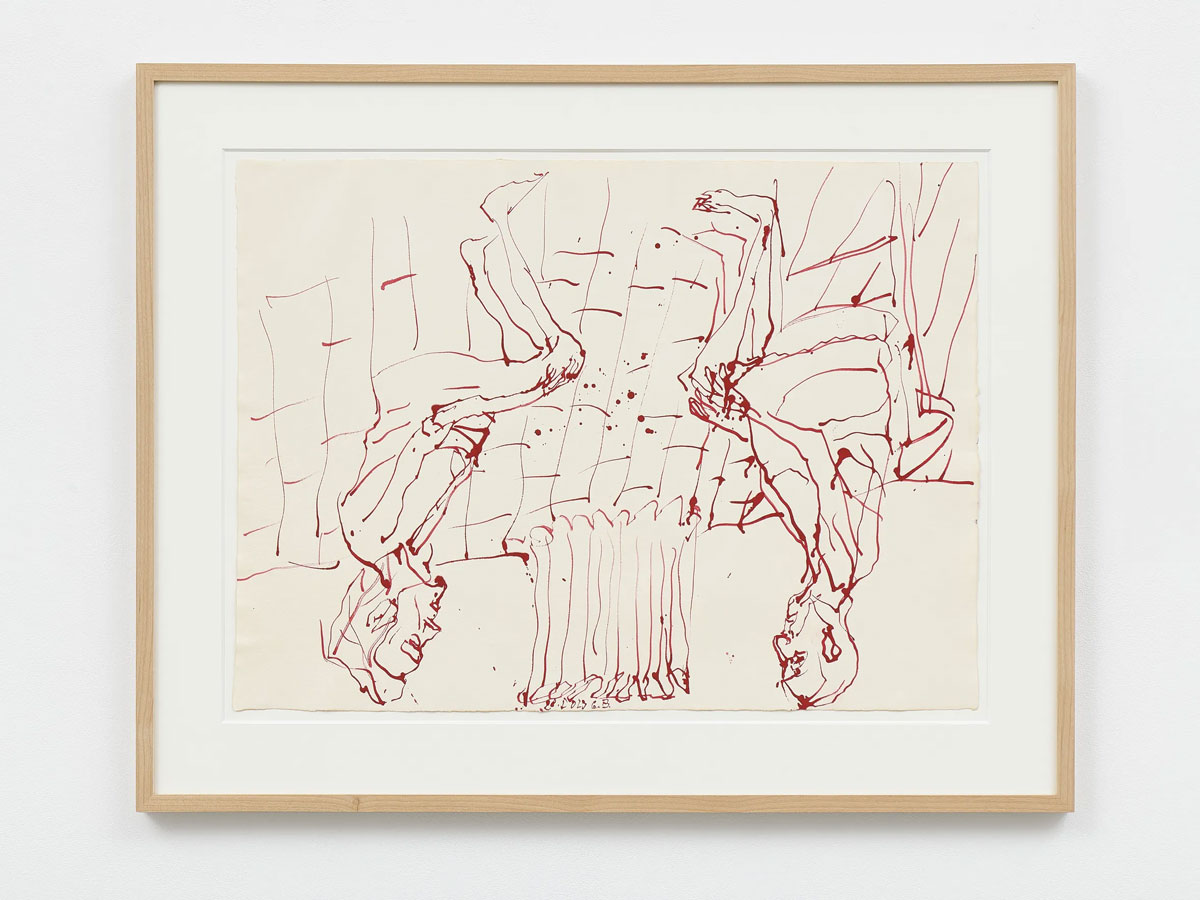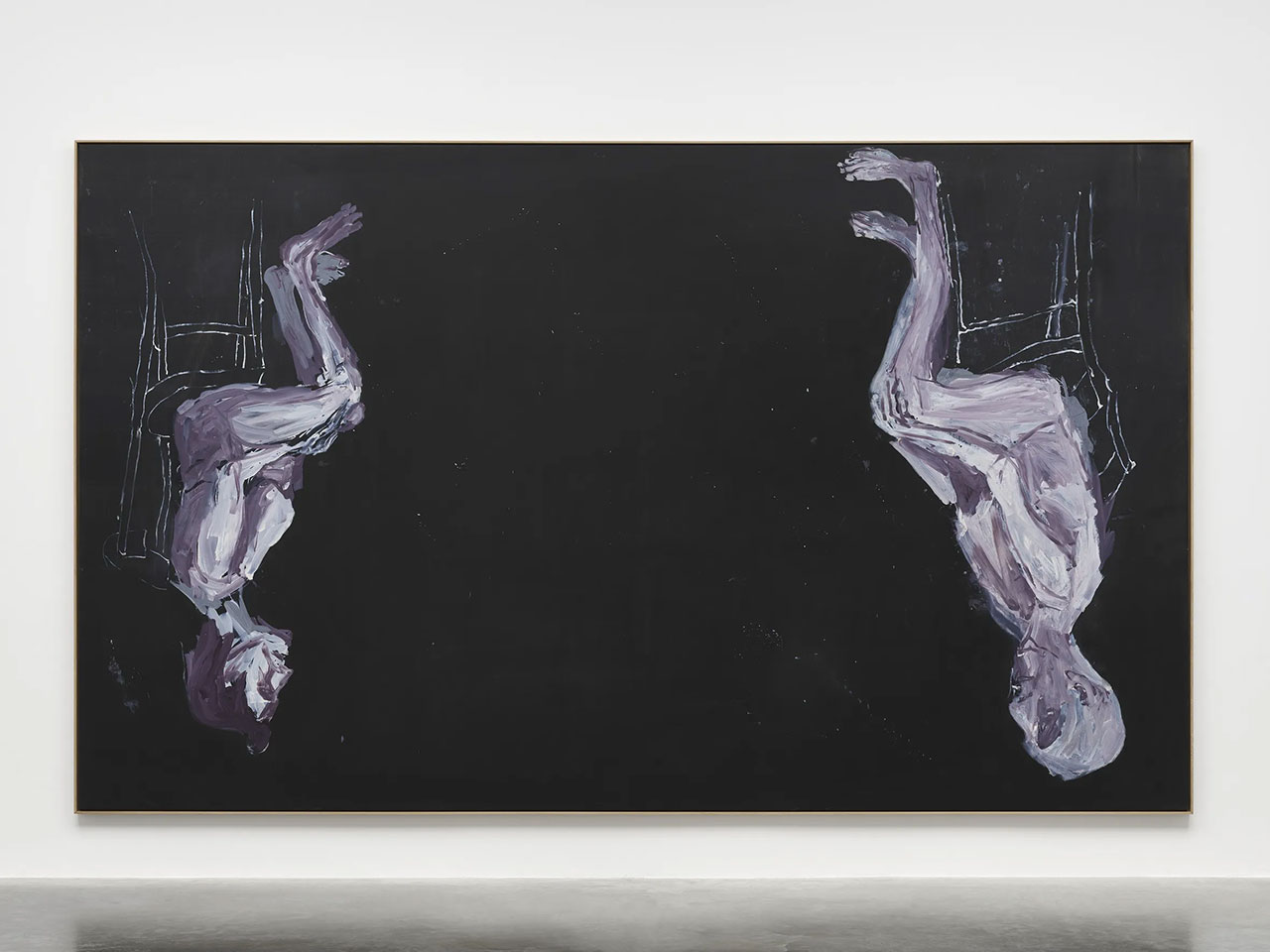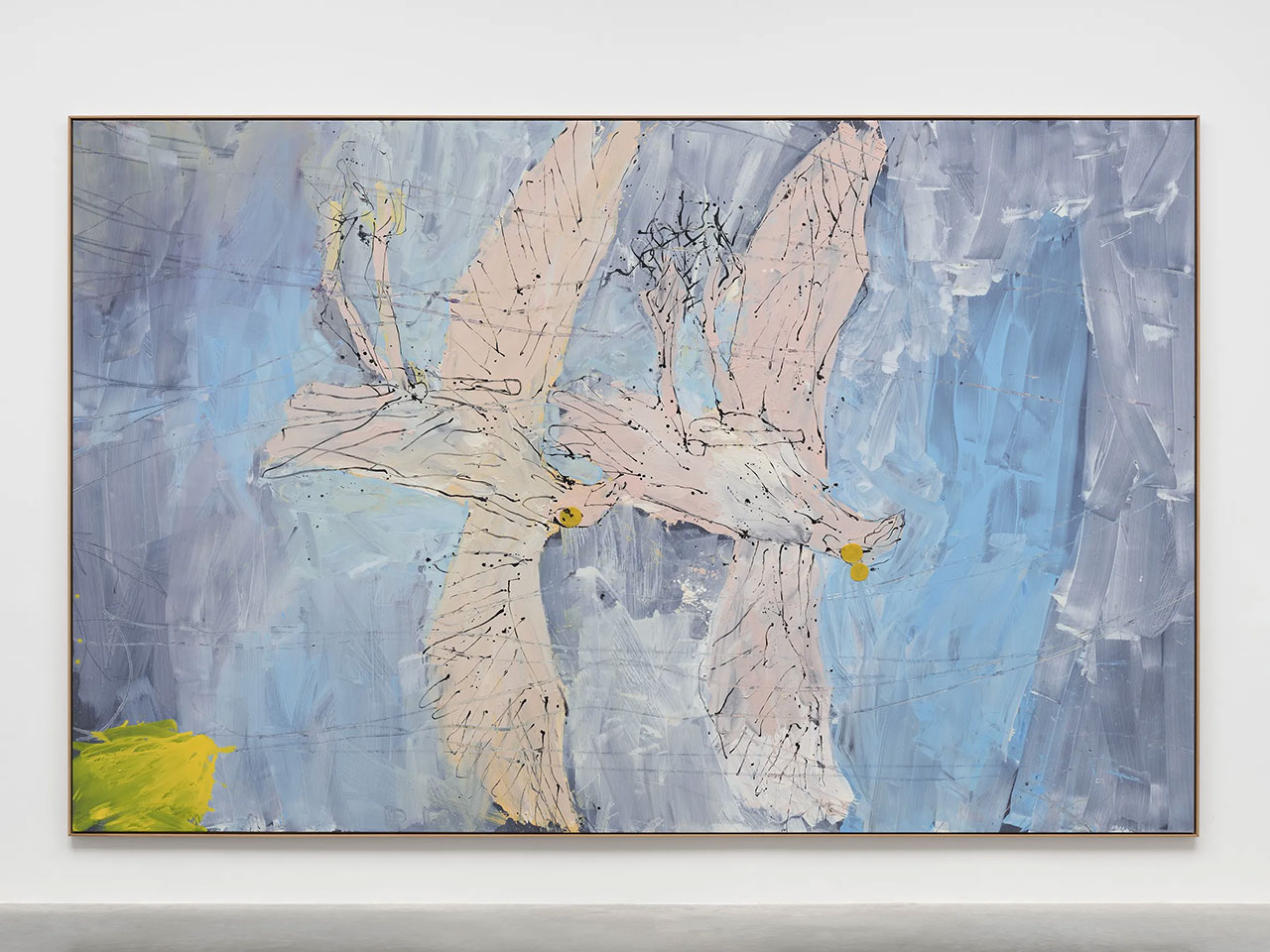ART CITIES: London-Georg Baselitz
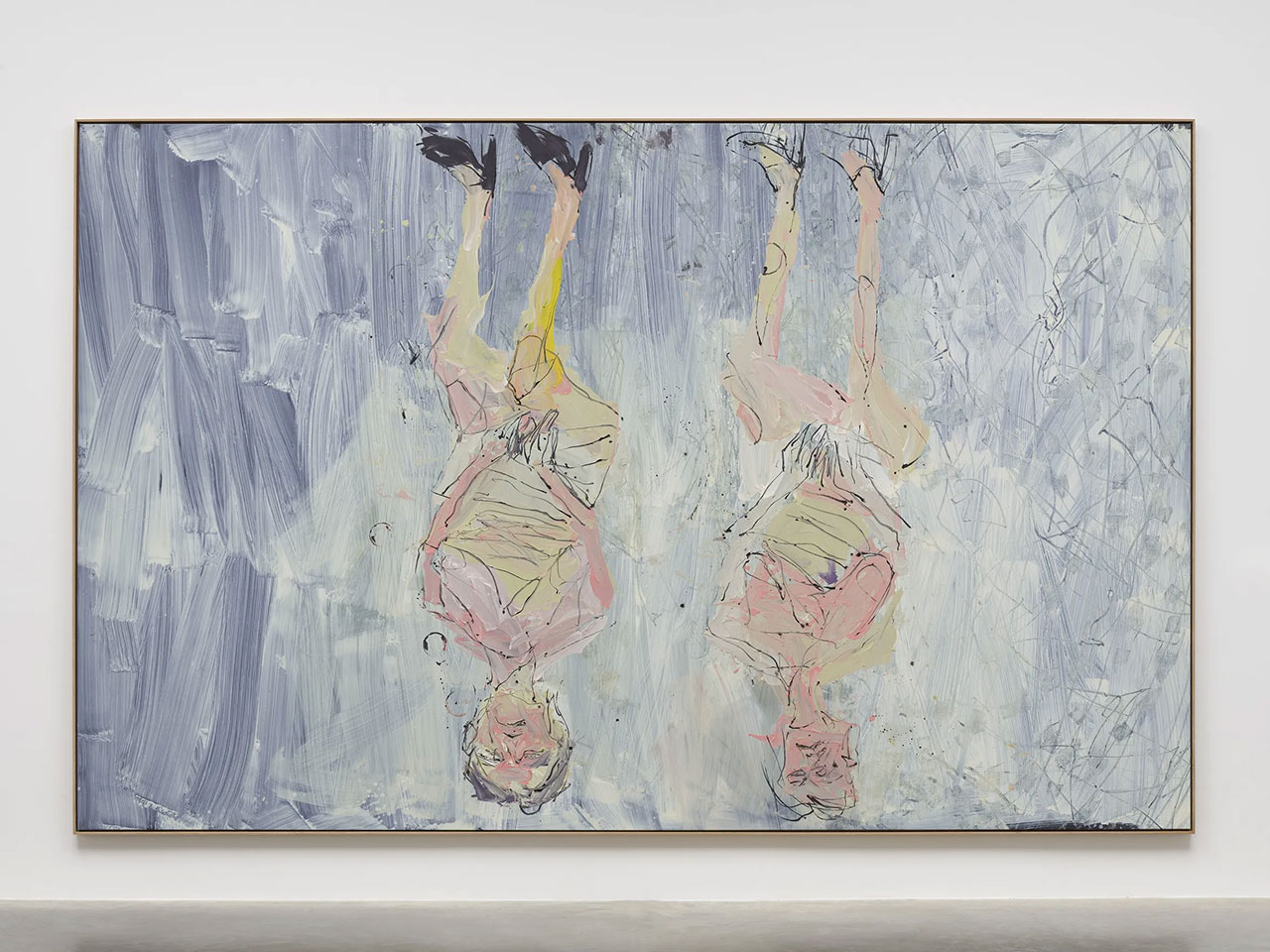 Refuting the ideology conveyed by the Soviet Union through Socialist Realism painting, after passing to the West in 1957, Baselitz discovered the modern and abstract avant-garde that was not taught in the GDR, and soon American Abstract Expressionism. While the art debate was polarised between the defenders of abstract art, a plastic language shared by democracies embodying a form of resilience with regard to the National Socialist past, and the figurative painters who rejected the doctrine imposed by the USSR, the artist sought his own path. He began by taking an interest in singular artists like Antonin Artaud, Jean Dubuffet and the Surrealists, becoming immersed in their works.
Refuting the ideology conveyed by the Soviet Union through Socialist Realism painting, after passing to the West in 1957, Baselitz discovered the modern and abstract avant-garde that was not taught in the GDR, and soon American Abstract Expressionism. While the art debate was polarised between the defenders of abstract art, a plastic language shared by democracies embodying a form of resilience with regard to the National Socialist past, and the figurative painters who rejected the doctrine imposed by the USSR, the artist sought his own path. He began by taking an interest in singular artists like Antonin Artaud, Jean Dubuffet and the Surrealists, becoming immersed in their works.
By Efi Michalarou
Photo: White Cube Gallery Archive
Comprising a large body of new work produced during an intensive year in the studio, Georg Baselitz’s solo exhibition “A Confession of My Sins” features large-scale paintings and a selection of works on paper in which the artist, now 86, surveys the past six and a half decades of his practice. From the vantage point of old age, Baselitz reflects upon a lifetime of lived experience and artistic invention, paying homage to key inspirations, motifs and subject matter, as well as unearthing pictorial references from his youth. ‘I’ve got my early childhood drawings of eagles, stags, deer, dogs and so on in folders,’ Baselitz remarks. ‘Every now and then I look at them, and I think was it a good time, was it a bad time?’ Appealing to this rich panoply of personal iconography, in several works the artist uses himself and his wife as a subject for exploration – an approach that has become focal to his recent paintings. “Der Maler in seinem Bett usw” (2023), presented alongside a selection of works on paper, depicts the painter and Elke Baselitz in a soft, spectral palette of whites. The two figures, seated and starkly rendered, are set against an enveloping darkness, recalling James McNeill Whistler’s portrait of his mother “Arrangement in Grey and Black No. 1” (1871). Whistler’s portrait fascinates Baselitz because ‘it has a hardness in it’ – one brought to bear by the contrast between the figure’s sombre attire and muted background wall, as well as the compositional flattening which serves to intensify her austere profile. “Verliebtheit damals und heute” (2023) and “James Whistlers Mutter von James Whistler (Der Maibaum)” (2023) re-stages her pose but replaces the background with a rich azure that brings to mind the beach scenes painted by Pablo Picasso in the late 1920s. Another of Baselitz’s paintings, “Marie-Therese in Dinard” (2023) makes direct reference to Picasso’s mistress Marie-Thérèse Walter who was often painted disguised as a multi-limbed sea creature, such that a shared interest between Baselitz and Picasso in conflating human and non-human might be inferred. As the artist muses, the drawings that serve as a counterpart for the exhibited paintings figure like ‘a dam between two ponds’, a metaphor that evokes the landscape of his childhood around Deutschbaselitz, a village in Saxony nestled between forests and lakes. Baselitz returns to this provincial imagery, depicting animals indigenous to the area like those in “Blaue Augen Rehe” (2023), which recalls the animal studies of German Expressionist Franz Marc. Elsewhere, dogs and horses are rendered as tentative, nervous outlines. As the writer Martin Gayford observes in an essay published in the catalogue accompanying the exhibition, the distinction between humans and non-humans is almost non-existent for Baselitz. Apropos George Stubbs’s portrait of a horse, “Whistlejacket” (1762), Baselitz expresses his fascination with the striking individuality of the stallion. One of Baselitz’s earliest, sustained preoccupations is with the French poet and playwright Antonin Artaud, who makes an appearance in two paintings presented in White Cube’s South Gallery II. “Die Maschine malt zweimal A.A.” (2023) depicts an uncanny doubling of two androgynous figures; one (or both) of whom may be the poet, their long hair resembling the style worn by Artaud in the late 1940s. The second work, “Jenseits Peddigrohrsofa in Wellenform Artauds Schlafzimmer” (2023) in which Artaud is actively named, instead sees any remaining vestiges of the figure collapsing into a mass of tangled lines in ink-black paint. Baselitz’s fascination with Artaud proved to be formative.
Photo: Georg Baselitz, Oh ho, siamo ritornati, am deutschen Wesen, Weltgenesungsbild (Oh ho, Siamo ritornati, through the German Spirit, World-Healing Image), 2023, Oil on canvas, 305 x 480 cm | 120 1/16 x 189 in., 309 x 484 x 5 cm | 121 5/8 x 190 9/16 x 1 15/16 in. (framed), © Georg Baselitz, Courtesy the artist and White Cube Gallery
Info: White Cube Gallery, White Cube Bermondsey, 144 – 152 Bermondsey Street, London, United Kingdom, Duration: 10/4-16/6/2024, Days & Hours: Tue-Sat 10:00-18:00, Sun 12:00-18:00, www.whitecube.com/
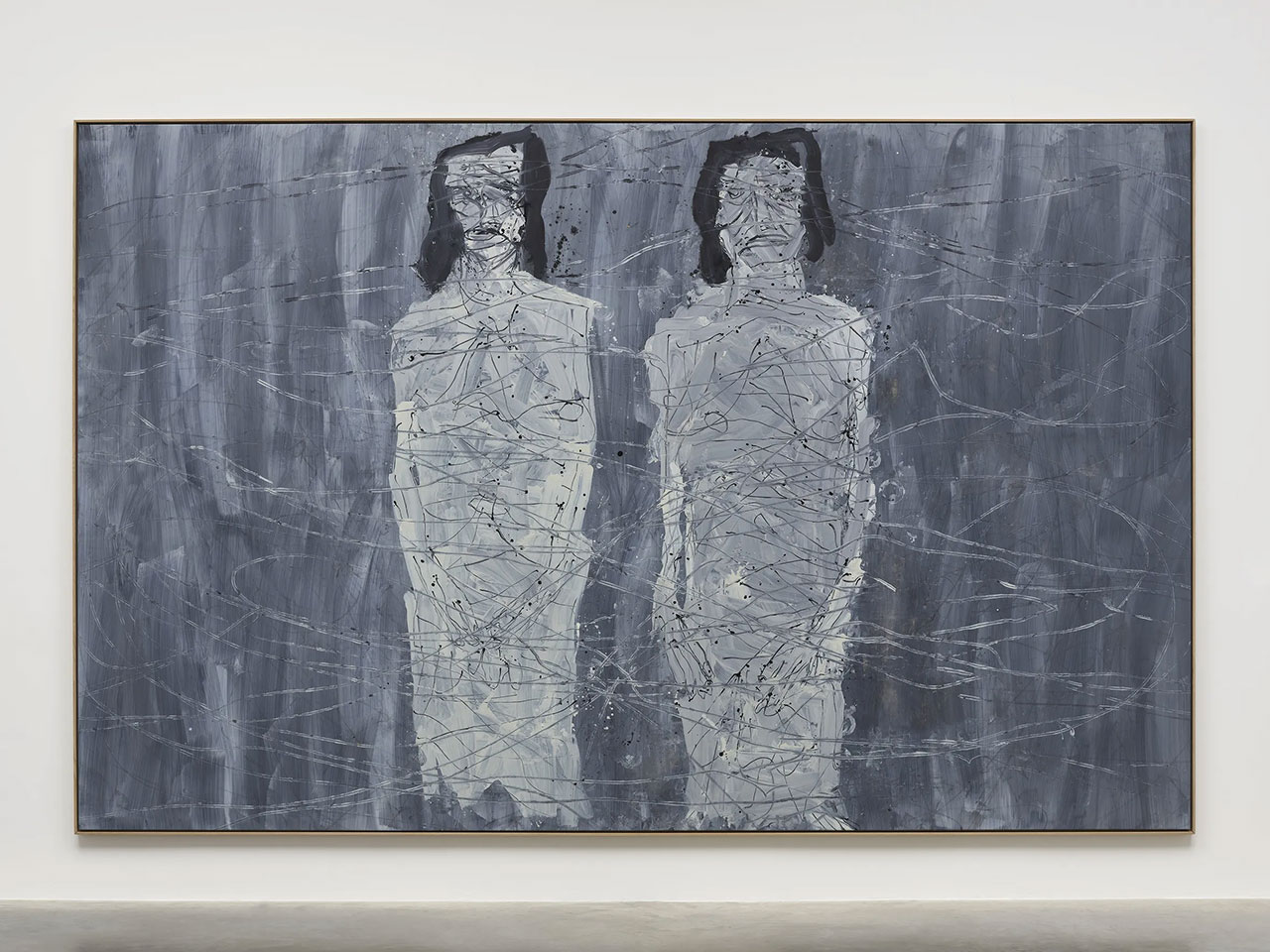
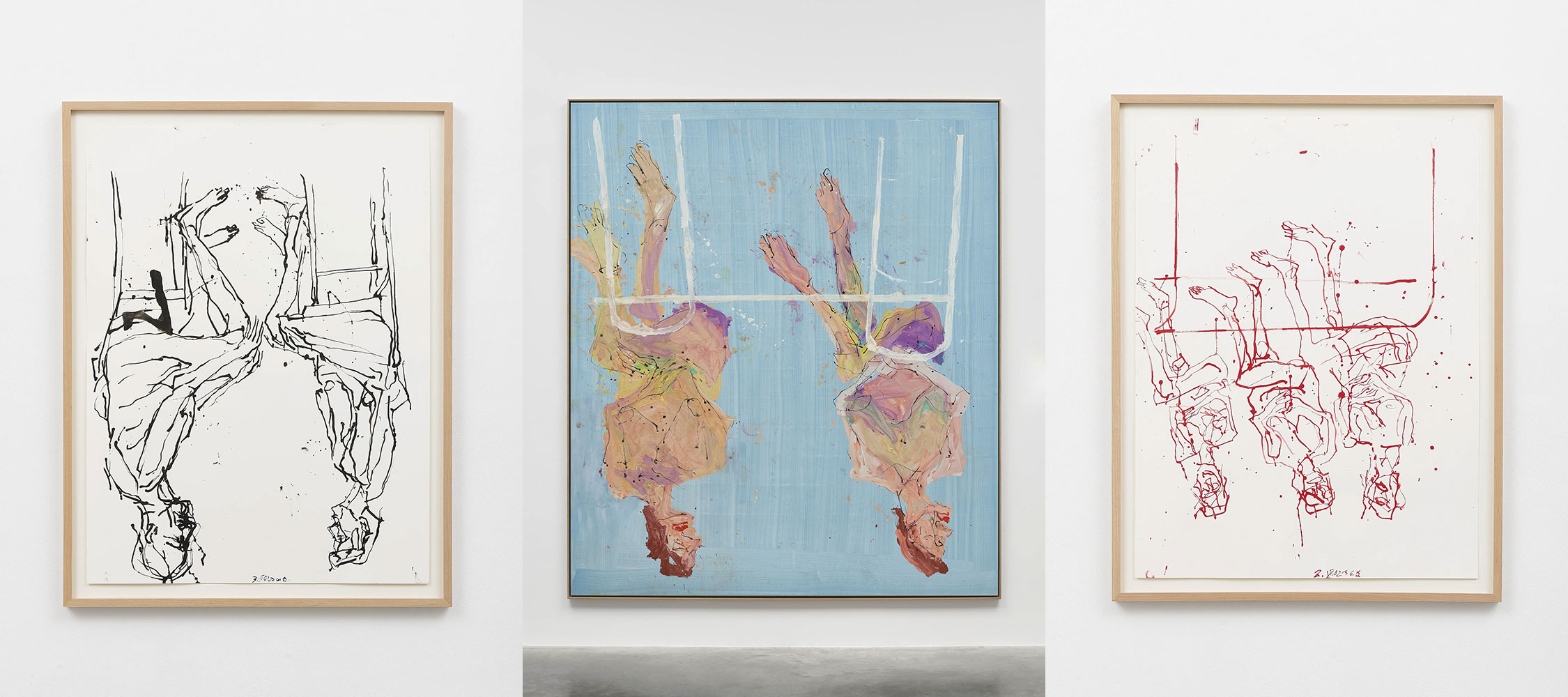
Center: Georg Baselitz Marie-Therese in Dinard (Marie-Therese in Dinard) 2023, Oil on canvas, 300 x 260 cm | 118 1/8 x 102 3/8 in., 304 x 264 x 5 cm | 119 11/16 x 103 15/16 x 1 15/16 in. (framed), © Georg Baselitz, Courtesy the artist and White Cube Gallery
Right: Georg Baselitz, Untitled, 2023, Red ink on paper, 100 x 74.9 cm | 39 3/8 x 29 1/2 in., 109.8 x 84.8 x 3.5 cm | 43 1/4 x 33 3/8 x 1 3/8 in. (framed), © Georg Baselitz, Courtesy the artist and White Cube Gallery
